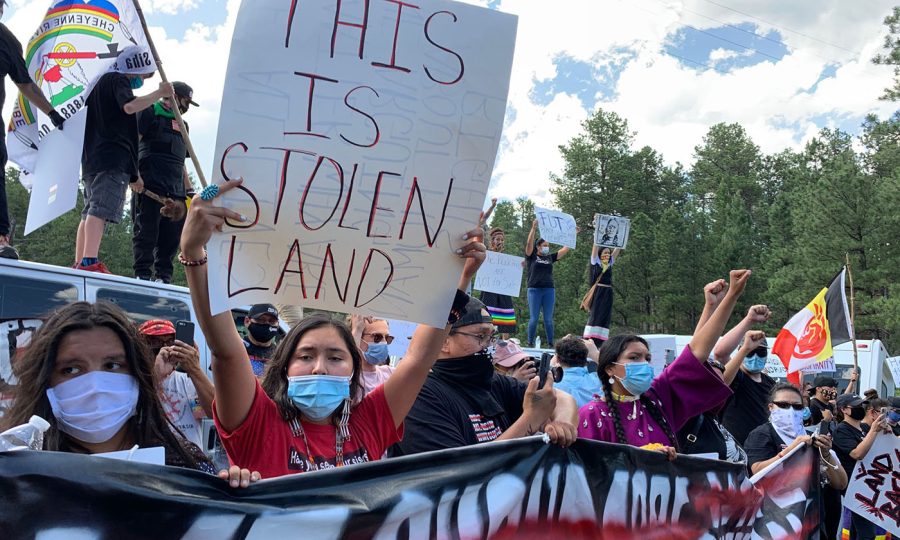Indigenous Land Acknowledgment Taken Seriously
October 13, 2021
Cal State East Bay’s Unprecedented Office
Land acknowledgments, while common throughout the United States, are often used as the end of the story. Almost a piece of showmanship rather than any proper form of amends towards the peoples on whose land the acknowledgment recognizes.
According to a Pew Research article, “dozens of public universities, museums, and government agencies … have adopted land acknowledgments,” but what exactly does this mean, and why are they important?
In general, a land acknowledgment is used to recognize the land on which an individual, company, event, or university is on was not granted to the United States in the most equitable terms.
To put it bluntly, we are “guests on stolen land,” said Dr. Claire Valderama-Wallace, an assistant professor at California State University, East Bay’s Department of Nursing and Health Sciences, and member of the Indigenous Acknowledgement Collective (IAC). The stolen land that the campus resides on is that of the Muwekma Ohlone peoples.
The IAC is a group of faculty, students, staff, and other community members that follow the lead of the Muwekma Ohlone tribal leadership in order to foster relationship building.
The IAC maintains multiple goals, first and foremost is the repatriation of funerary remains to the Muwekma Ohlone people, of which CSUEB has at least sixty-five. Many of the goals of the IAC include “not adding to the cultural taxing” of the Muwekma Ohlone by constantly asking them to speak and educate on all manners, changing names of campus spaces and buildings to keep the Chochenyo language alive, and allowing indigenous students to feel more part of CSUEB’s community, a project headed by Dr. Fanny Yeung, the Director of Institutional Effectiveness & Research at CSUEB. As well as working hard with Chabot College to follow the same paths and work with the Muwekma Ohlone people.
In conjunction with this is the establishment of an office for the Muwekma Ohlone people on campus. This office has been “in the works since the summer when members of the tribal council toured East Bay for office space,” and the “goal is to have it established by the end of the semester if not sooner,” stated Valderama-Wallace.
This office “would essentially act as a capitol for this tribe,” according to Valderama-Wallace and that would be unprecedented in its scope according to both her and Dr. Enrique Salmon, a professor in CSUEB’s Ethnic Studies department.
Currently, the Muwekma Ohlone people “do not currently have a land base,” said Salmon, meaning there is no centralized location from which the Muwekma Ohlone can work to restore their federal tribal recognition, something they have been missing for more than two decades.
As the Muwekma Ohlone people have no place from which to continue their fight, “having an office affords the tribe credibility that they are a viable community,” and will work in their service towards recognition from the federal government according to Salmon.
This office will do more than provide administrative space for the Muwekma Ohlone, this will also afford them all of the resources at the school’s disposal to ensure that they can and will be recognized and be granted all the benefits that that affords them.
The establishment of an office for the Muwekma Ohlone is not the end goal for the IAC, nor does it fully make amends to this group of people, it is “a bare minimum,” said Valderama-Wallace.
This will be one acknowledgment of the land that East Bay rests on is indigenous land and “by providing the tribe this office space they will be able to do their work on their ancestral land,” discussed Salmon.
If you’re interested in assisting the IAC and would like to work towards helping the indigenous peoples whose land CSUEB rests upon contact Dr. Valderama-Wallace at [email protected] for more information.
“There is still more work to be done and constant education and a changing of mindset will be necessary,” said Valderama-Wallace.
















